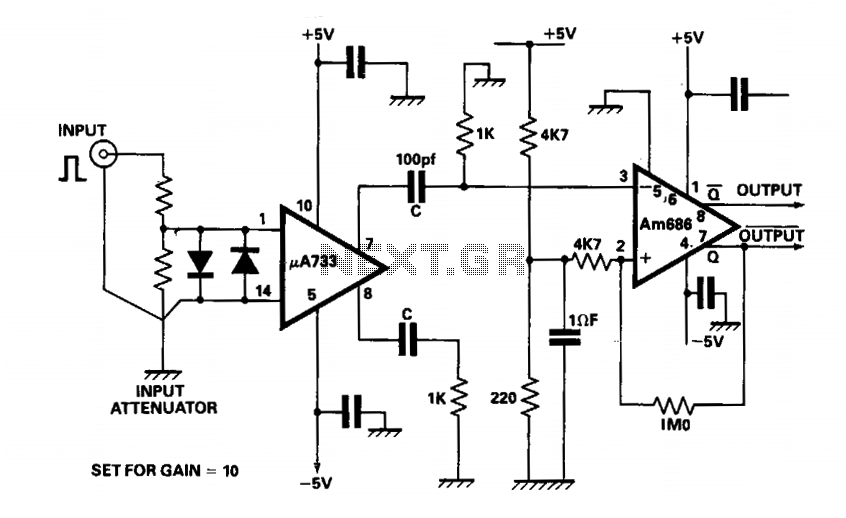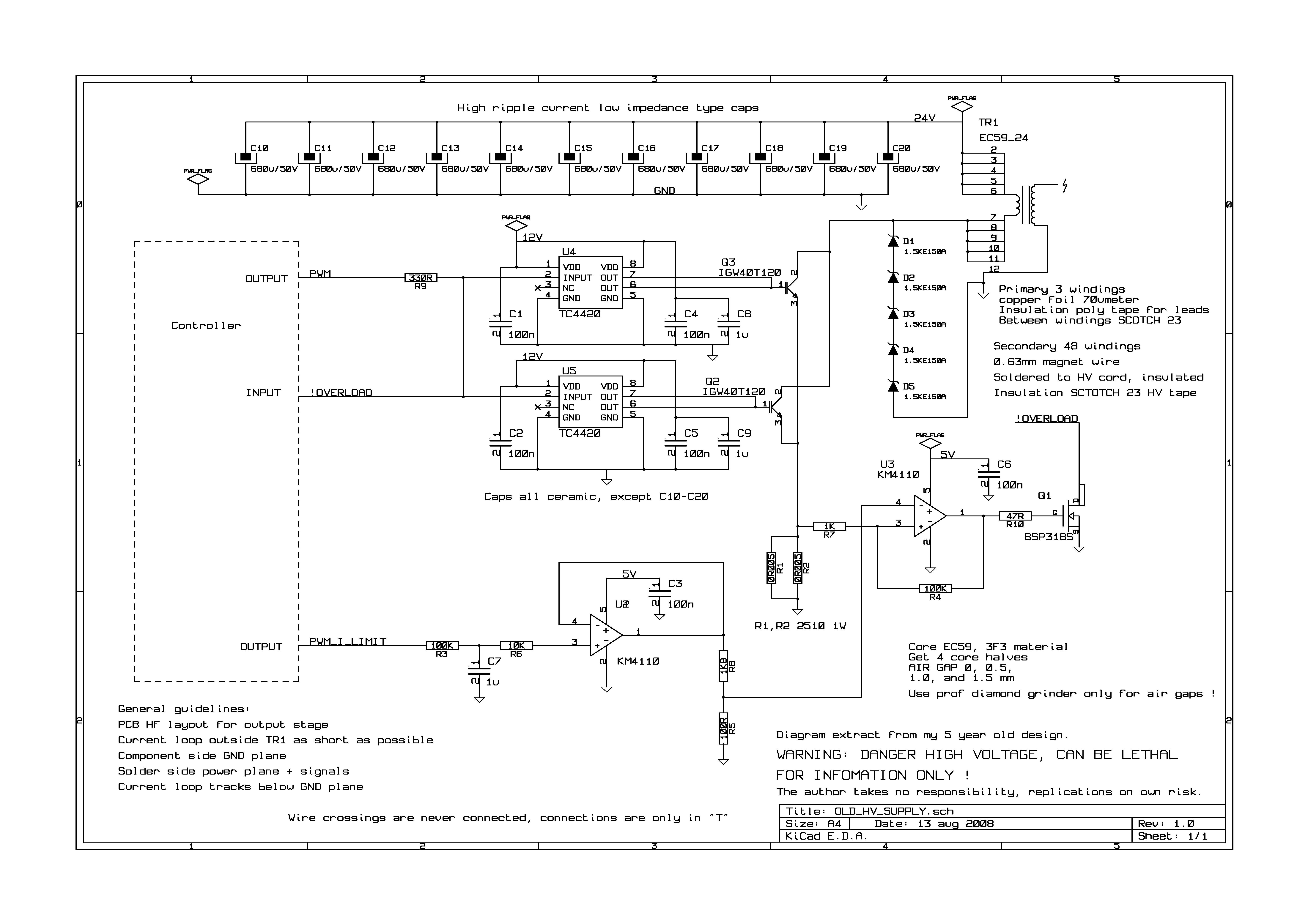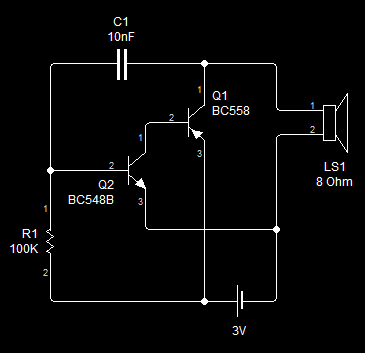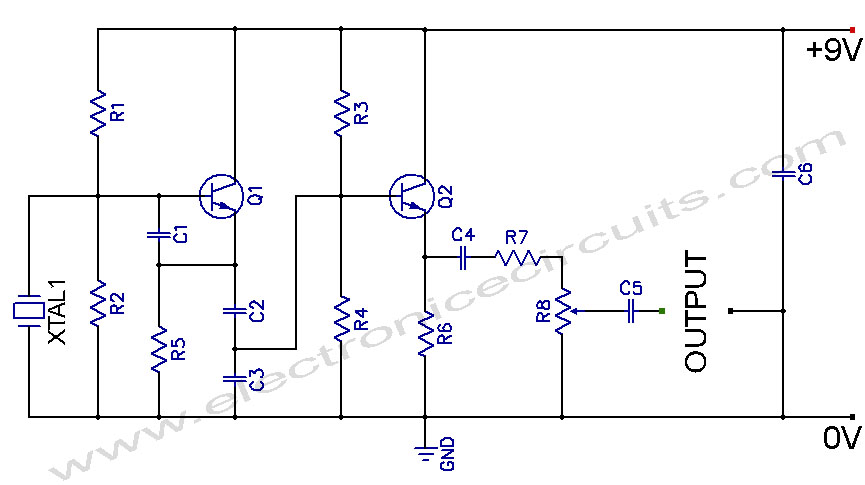
Monostable oscillator

The output of a video amplifier is differentiated before being fed to a Schottky comparator. The propagation delay is typically reduced to 10 ns. The output pulse width is determined by the value of C, 10 pF, resulting in a pulse duration of approximately 90 ns.
The described circuit configuration utilizes a video amplifier followed by a Schottky comparator to process video signals effectively. The video amplifier enhances the amplitude of the input video signal, ensuring that it is suitable for further processing. The differentiation stage introduces a high-pass filter effect, allowing rapid changes in the signal to be detected while attenuating lower frequency components. This differentiation is crucial for applications requiring precise timing and fast response.
The Schottky comparator, known for its low propagation delay, is employed to compare the differentiated output signal against a predetermined reference level. The typical propagation delay of 10 ns ensures that the circuit can operate at high speeds, making it suitable for applications in video processing where timing is critical.
The output pulse width, influenced by the capacitor value (C = 10 pF), is approximately 90 ns. This pulse width can be adjusted by changing the capacitance value, allowing for flexibility in applications requiring different timing characteristics. The overall design emphasizes minimal delay and precise pulse generation, making it ideal for high-speed video signal processing in various electronic systems.The output of a video amplifier is differentiated before being fed to a Schottky comparator. The propagation delay is reduced to typically 10ns. The output pulse width is set by the value of C, lOOpf giving a pulse of about 90ns duration. It using video amplifier and comparator.
The described circuit configuration utilizes a video amplifier followed by a Schottky comparator to process video signals effectively. The video amplifier enhances the amplitude of the input video signal, ensuring that it is suitable for further processing. The differentiation stage introduces a high-pass filter effect, allowing rapid changes in the signal to be detected while attenuating lower frequency components. This differentiation is crucial for applications requiring precise timing and fast response.
The Schottky comparator, known for its low propagation delay, is employed to compare the differentiated output signal against a predetermined reference level. The typical propagation delay of 10 ns ensures that the circuit can operate at high speeds, making it suitable for applications in video processing where timing is critical.
The output pulse width, influenced by the capacitor value (C = 10 pF), is approximately 90 ns. This pulse width can be adjusted by changing the capacitance value, allowing for flexibility in applications requiring different timing characteristics. The overall design emphasizes minimal delay and precise pulse generation, making it ideal for high-speed video signal processing in various electronic systems.The output of a video amplifier is differentiated before being fed to a Schottky comparator. The propagation delay is reduced to typically 10ns. The output pulse width is set by the value of C, lOOpf giving a pulse of about 90ns duration. It using video amplifier and comparator.





